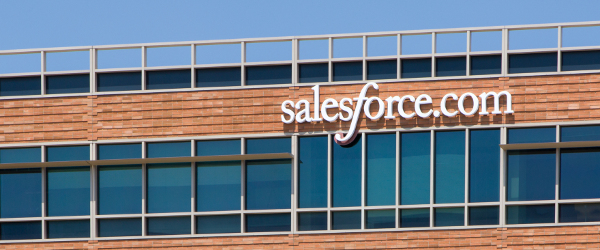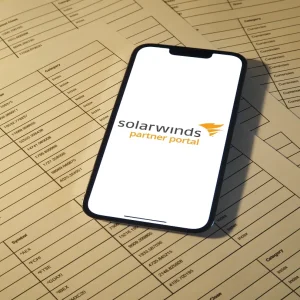
CBR: What has been happening in Salesforce’s developer community of late?
Adam Seligman: We’ve announced at Dreamforce this week that there will be 1.8 million developers in our community, which is really exciting. When I was on stage for the developer keynote two years ago we had 800,000 developers. So we’ve added a million developers in two years.
CBR: So what is your role in that?
AS: My job is making that number go up, and making every single one of them successful and happy and connected – part of a developer community. We work really hard to do community events, grow our developer user groups and make sure all this great innovation you can do with Salesforce is available to developers, admins, and everybody else.
CBR: What’s the range of abilities among developers?
AS: I think that’s something that’s unique about Salesforce as a platform. It’s part of our tagline that it’s really important to us we’re not a one cloud company any more: we’re a six cloud company. But across all those technologies is one underlying developer platform, a set of developer services called the Salesforce1 Platform, and you can just build amazing stuff with it.
What’s really interesting about this platform is anybody can be a developer on Salesforce1 Platform. So it ranges form like a hardcore Python programmer all the way to an admin or business analyst. We look on the [developer platform] Force.com side and roughly half the people in our community actually have developer or engineer or something in their title, and the other half have other roles: admin, business analyst, sales manager, CTO, and other titles.
CBR: How important is the launch of your new development tool Lightning?
AS: Lightning is a huge deal. This is like a philosophical thing for Salesforce, making products easy to use. Wave brings analytics to everybody, the Salesforce1 Platform brings development to everybody, and making apps to everybody. It’s in our DNA, and we take it super seriously.
CBR: How long has it been in the pipeline?
AS: We’ve been working on our app, called Salesforce1, for a couple of years. We released it last year at Dreamforce, we turn it on, millions of people use it. It’s a pretty huge success for us. What’s neat about Salesforce1 the app is underneath it’s powered by a technology called the Lightning framework, and Lightning components. We’ve been testing this in production for over a year, working on it for multiple years.
CBR: So what’s new from a customer perspective?
AS: It enables taking Salesforce1, the mobile app, and customising it. We showed that a year ago: adding actions, adding custom fields, adding custom objects. Just all the things that are core Salesforce. And on the programmer side you have a whole set of Salesforce mobile services. We enable you to hit our APIs, anything you need to develop custom apps with Salesforce.
It lets a programmer build a component using the Lightning framework in JavaScript, CSS, HTML, and then a business person can drop in and customise part of the Salesforce. So you can customise the way a contact detail page works or you can customise the completion date on some piece of data or manufacturing line.
CBR: How dependent are you on the developer community for your vertical strategy?
AS: I think developers are incredibly important to us for verticalisation. The evolution that’s happening in the background is the platform is evolving to be more and more use cases, more and more scenarios and more and more verticals. So the demands of the platform span all these different industries. That’s not something we want to keep up with, we want to build a whole ecosystem around it.
CBR: Does that not mean you’re not interested in verticalisation for yourselves?
AS: Of course we are, but we don’t build blow out preventers here. General Electric (GE) builds blowout preventers. GE is going to need bespoke software for managing blowout preventers, so they can do that with the Salesforce platform.
That’s the business strategy. Put it in our terms is what we want to have great apps that our customers use, but we also want to be an amazing platform that people want to go and extend and build whatever apps they need. We want to build a great partner ecosystem around it.
We could have chosen to have narrowly defined, constrained products that were not customisable, and a platform that was not extensible. Probably could have gotten the products out faster that way, but by taking a foundational approach to the Lightning components we’re designing to be a platform company, designing in right from the start all this customisation and extension. So you can go and tackle any market you want, customise it for whatever industry you want.
CBR: What’s you involvement on the educational side of things? I’m guessing you don’t teach Python.
AS: Interesting you say that because at the Hackathon this weekend we had our security team. The head of the security team is Jacob Kaplan-Moss who’s the author of the Django [web app] framework. We’re really active in open source communities. We have the author of [programming language] Ruby, Yukihiro Matsumoto, as a Salesforce employee.
We’re in all these developer communities, and what really makes them go is giving back, contributing open source. We have a developer relations team and we’ve been around the world this year. Between webinars, meet-ups, developer use groups, first party events that we run, my team has done more than 750 events this year. Last year our total was around 350 for the year. When Istarted here we had 10 developer user groups; we have more than 100 now.
The art in developer relations is not just talking to people, it’s building a self-sustaining , really helpful community, so we work really hard to enable the community. Give them content and support them and help them connect, watching them thrive.






